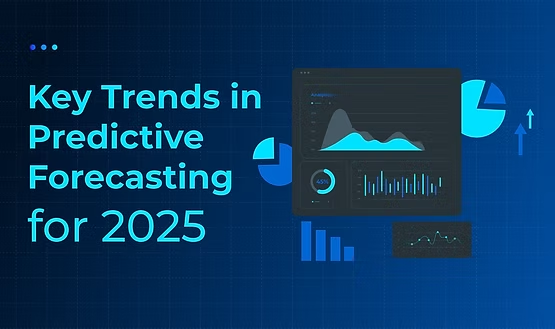
eCommerce brands must navigate multi-platform sales, unpredictable demand shifts, and intense competition. All while maintaining profitability.
And it’s crucial for the decision-making to be on point if you’re to achieve this. However, traditional decision-making methods struggle to keep up with real-time market changes. Result? Inefficient pricing, misallocated ad budgets, and inventory issues.
AI-powered predictive forecasting helps deal with these challenges by:
With predictive models, eCommerce brands can move from reactive to proactive decision-making, reducing risks and maximizing profitability.
This blog talks about how predictive forecasting simplifies pricing, ad spend, and inventory management.
Let’s dive right in!
Predictive models analyze vast amounts of historical and real-time data to forecast outcomes with accuracy that human intuition simply can’t match.
By processing vast datasets in real-time, it identifies patterns to predict future sales, demand fluctuations, and pricing opportunities.
Unlike traditional forecasting, it continuously adapts as new data (around buying patterns, seasonal trends, market shifts) keeps coming in. This reduces guesswork and enables proactive decision-making. It’s the solution to stay ahead of demand shifts and increase their profits.
With each passing day, predictive models are becoming faster, more accurate, and more efficient.
Relying on manual forecasting methods, which are slow and prone to errors, creates bottlenecks in operations.
From inventory management to marketing budgets, every aspect of eCommerce thrives on accurate predictions.
Here’s why predictive forecasting is a must-have for your business:
Inventory mismanagement is one of the biggest challenges for eCommerce businesses. When real-world disruptions affect demand, traditional forecasting methods often fail, leading to either stock outs or overstocking. Both impact profit negatively.
The IHL Group calls this issue “Inventory Distortion.”
Inventory Distortion costs retailers nearly $1.77 trillion worldwide. The key to avoiding this problem is visibility—the ability to foresee demand fluctuations before they happen.
While descriptive, prescriptive, and diagnostic analytics help in understanding past trends and optimizing operations — predictive forecasting provides a real-time look into the future. This allows businesses to prepare for demand shifts before they occur.
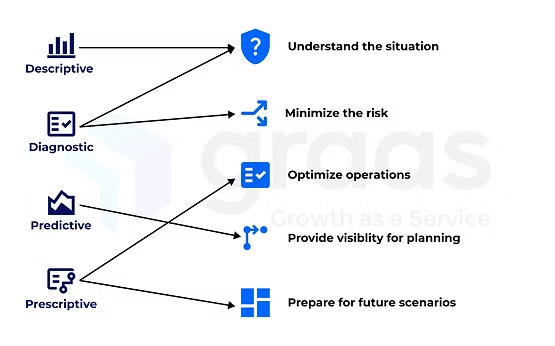
By analyzing vast datasets (including historical sales, market trends, and external factors like seasonality), AI-driven forecasting helps businesses stock the right products in the right quantities, reducing lost sales and excess inventory costs.
Marketing budgets can easily be wasted if not allocated strategically. Predictive forecasting enhances ad spend efficiency by analyzing historical campaign performance and customer behavior to anticipate future outcomes.
eCommerce marketing managers can use AI-driven predictive forecasting to predict which campaigns will yield the highest ROAS.
Instead of relying on gut instinct, they can make data-backed decisions that optimize budget distribution across multiple channels and campaigns.
Since customer journeys span multiple touchpoints, predictive forecasting helps identify which channels and creatives drive the highest conversions. This ensures that every dollar spent on advertising is used to its full potential.
Moreover, real-time analysis enables dynamic budget adjustments throughout a campaign’s lifecycle. As new data is collected, insights reveal which ads are performing well and which ones should be scaled back.
Predictive forecasting improves customer segmentation by analyzing behavioral data and categorizing shoppers into different groups based on their likelihood to respond to different ad types, creatives, and channels.
Instead of applying a one-size-fits-all strategy, businesses can tailor their messaging to specific customer segments.
As customer preferences evolve, predictive models adjust accordingly, ensuring that campaigns remain relevant and effective. This not only improves ROAS but also enhances the overall shopping experience.
Another reason eCommerce brands should get on board with predictive forecasting is that it can help refine sales and pricing strategies.
For example, forecasting might reveal that certain products are understocked. This can happen when an item is in high demand, but there’s a low quantity of that SKU at your warehouse. In this case, you might want to increase the price to capitalize on the low supply-high demand situation.
The vice-versa of this is also true. If some SKUs aren’t selling as expected, predictive forecasting can help you run sales on them.
This data-driven approach ensures that pricing strategies align with actual demand, boosting both revenue and profitability.
There are inherent risks in scaling eCommerce, particularly regarding inventory and sales. Making the wrong move can lead to excessive markdowns, hurting margins and brand perception.
Running a clearance sale without accurate demand forecasting can result in deeper-than-needed discounts. Cuts profits unnecessarily. Predictive forecasting ensures that sales strategies are informed by real-time data, reducing financial risks.
If your brand sells perishable products, the risk of waste and lost revenue is even higher. If items expire, you’ll face unnecessary losses.
Predictive forecasting optimizes replenishment cycles, ensuring that the right amount of inventory is produced and stocked at the right time.
These are just some of the many reasons why eCommerce businesses should implement predictive forecasting in their operation. With predictive analytics, you can make better decisions at every front of your business — be it marketing, sales, inventory, or pricing.
Changing consumer behavior is not the only factor you should think about. Predictive forecasting is changing too. And if you’re keeping up with the way it can be used, you’ll not be using it to its full potential.
Here are the top trends shaping predictive forecasting in 2025:
Gone are the days when businesses had to rely on generic predictive models that offered little relevance to their specific market.
In 2025, AI models are fine-tuned to regional, platform-specific, and customer-segmented data, increasing the accuracy of insights to over 95%.
eCommerce analytics platforms like Graas use first-party data from businesses to generate highly tailored insights. This means brands can understand exactly what influences customer behavior, what pricing strategies work best, and what triggers a purchase, making forecasting more reliable than ever before.
Imagine you have 500 units of a product priced at $25. Demand analysis shows that at this price, 300 customers are likely to purchase. However, if you lower the price to $22, you could attract 450 buyers.
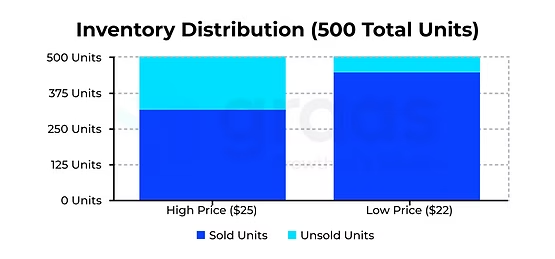
The question then becomes: should you optimize for volume or margin?
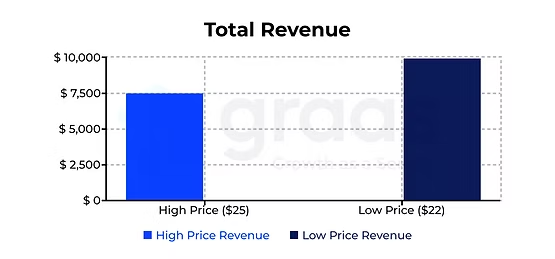
It’s clear the low price generates more revenue — and you’re clearing more stock. But does this hurt your profitability? Or does the holding cost of 150 fewer items save you enough to maintain profitability? Only your business data can answer that — and this is where most predictive models fail.

Predictive forecasting eliminates guesswork by analyzing real-time demand fluctuations, competitor pricing, and purchasing trends to recommend the most profitable pricing strategy.
For example, if an AI-driven model detects a sudden surge in demand due to a competitor running out of stock, it may suggest increasing the price slightly to maximize margins.
Conversely, if sales are slowing down, it might recommend a temporary discount to maintain steady revenue flow.
This real-time adaptability ensures eCommerce brands capture revenue at the optimal price point, avoiding lost sales due to outdated pricing strategies. In 2025, businesses using predictive forecasting for dynamic pricing and inventory allocation will be more equipped to balance demand and profitability.
Inventory management is not just about storing goods—it’s about finding the right balance between supply and demand. Timing is everything.
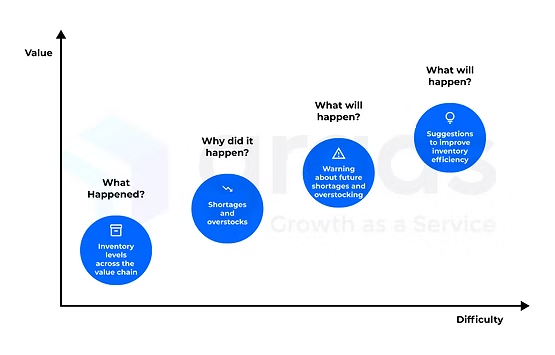
Move too slow with production, and you miss opportunities. Move too fast, and you incur high holding costs.
In 2025, predictive forecasting will help businesses remove the guesswork, allowing them to accurately anticipate demand spikes during sales, promotions, and seasonal events. This reduces stockouts during peak periods while preventing surplus inventory when demand slows down.
Some products sell out faster than expected—was it due to pricing? Should other product prices be adjusted as well? Without data, these decisions are impossible to make accurately.
Predictive forecasting in 2025 allows eCommerce brands to simulate different pricing strategies and their impact on sales while maintaining profitability.
Additionally, it helps detect anomalies—such as unexpected demand surges—allowing businesses to prepare for upcoming trends and avoid inventory mismanagement.
By integrating predictive forecasting, eCommerce brands can fine-tune operations, improve decision-making, and increase profits in an increasingly data-driven industry.
With market trends shifting rapidly, relying on manual forecasting methods or gut instincts can leave your business vulnerable many challenges.
AI-driven predictive forecasting helps eCommerce brands stay ahead of demand fluctuations, optimize pricing, and maximize revenue—all in real-time.
If you’re not using predictive analytics, you’re already falling behind.
✅ Reduce Inventory Distortion
✅ Improve Ad Spend Efficiency
✅ Refine Pricing Strategies in Real Time
✅ Segment Customers with Precision
✅ Minimize Risk & Boost Profitability
✅ Optimize Promotional Timing
✅ Enhance Supply Chain Resilience
✅ Improve Customer Retention
✅ Increase Operational Efficiency
Want to stay ahead of trends? Discover how Graas’ AI-powered forecasting tools can future-proof your business.